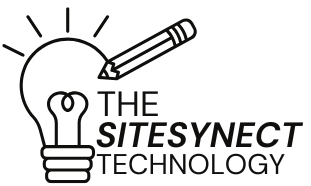Employee Self-Service Portals: Benefits and Setup Guide
Discover the benefits of Employee Self-Service Portals and learn how to set one up in 7 steps. Boost HR efficiency, employee engagement, and data security with our expert guide.

Introduction
Employee Self-Service (ESS) portals are revolutionizing how businesses manage HR tasks, empower employees, and streamline operations. As remote work and digital transformation dominate the tech landscape, ESS portals are becoming essential tools for modern workplaces. In this guide, we’ll explore the key benefits of ESS platforms, how to set one up effectively, and the latest trends shaping their evolution.
Why Employee Self-Service Portals Matter in 2024
-
Time and Cost Savings
-
Automate routine HR tasks like leave requests, payroll updates, and benefits enrollment.
-
Reduce administrative workload by up to 40%, allowing HR teams to focus on strategic initiatives.
-
-
Enhanced Employee Experience
-
Empower employees to access payslips, update personal details, and track PTO in real time.
-
24/7 accessibility improves satisfaction and reduces dependency on HR support.
-
-
Improved Data Accuracy
-
Minimize human errors by letting employees input their own information directly.
-
Centralized data ensures compliance and simplifies audits.
-
-
Transparency and Engagement
-
Employees gain visibility into company policies, training programs, and career development resources.
-
Foster a culture of trust with open communication channels.
-
-
Scalability for Growing Teams
-
Easily onboard new hires and manage global teams with cloud-based ESS solutions.
-
How to Set Up an Employee Self-Service Portal: 7 Steps
-
Assess Your Needs
-
Identify pain points: payroll, attendance, benefits, or performance management.
-
Survey employees to prioritize features they value most.
-
-
Choose the Right Software
-
Opt for platforms like Workday, BambooHR, or Zoho People, depending on company size and budget.
-
Prioritize user-friendly interfaces, mobile compatibility, and robust security (e.g., GDPR/ISO compliance).
-
-
Customize the Portal
-
Brand the portal with your company’s logo, colors, and policies.
-
Enable role-based access to protect sensitive data.
-
-
Integrate with Existing Systems
-
Sync with HRMS, payroll software, or Slack/Microsoft Teams for seamless workflows.
-
-
Test and Refine
-
Conduct beta testing with a small group to identify bugs or usability issues.
-
-
Train Employees and HR Teams
-
Host workshops or create video tutorials to ensure smooth adoption.
-
-
Launch and Gather Feedback
-
Monitor usage metrics and iterate based on employee suggestions.
-
Trending Features in Modern ESS Portals
-
AI-Powered Chatbots: Instant answers to FAQs like "How do I reset my password?"
-
Mobile-First Design: Apps with biometric login and push notifications.
-
Personalized Dashboards: Tailored insights for goals, benefits, and training.
-
Cybersecurity Enhancements: Multi-factor authentication (MFA) and encryption.
-
Analytics-Driven Insights: Track engagement trends and predict attrition risks.
What's Your Reaction?
 Like
0
Like
0
 Dislike
0
Dislike
0
 Love
0
Love
0
 Funny
0
Funny
0
 Angry
0
Angry
0
 Sad
0
Sad
0
 Wow
0
Wow
0






































